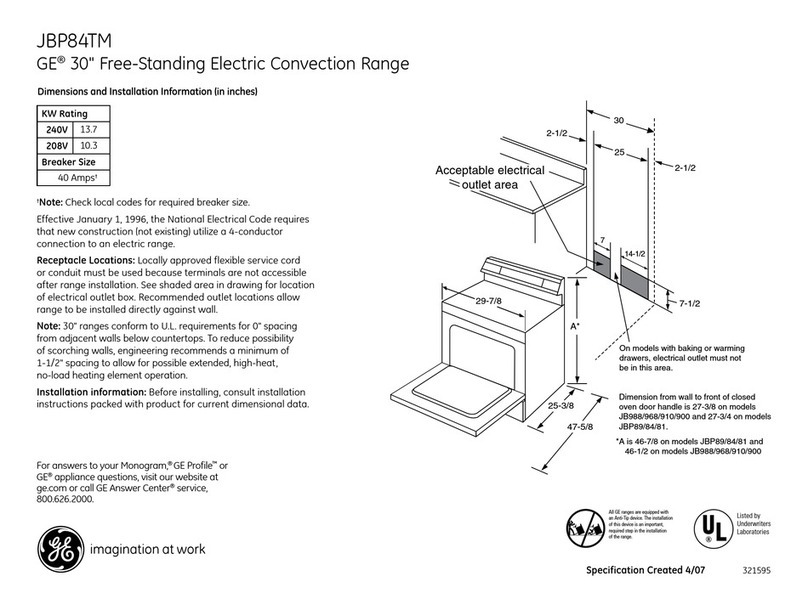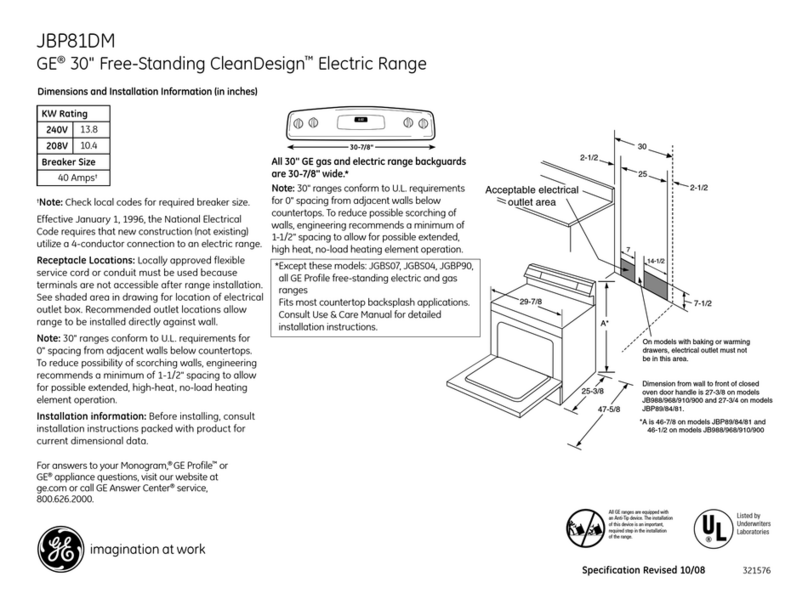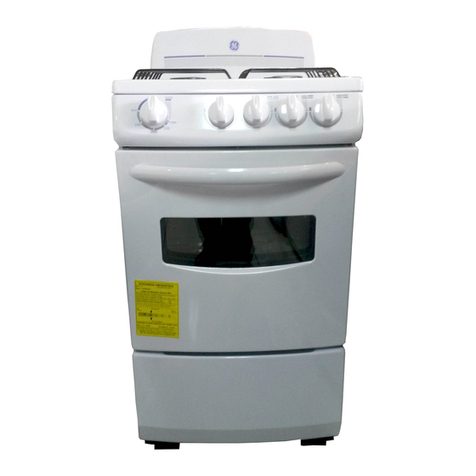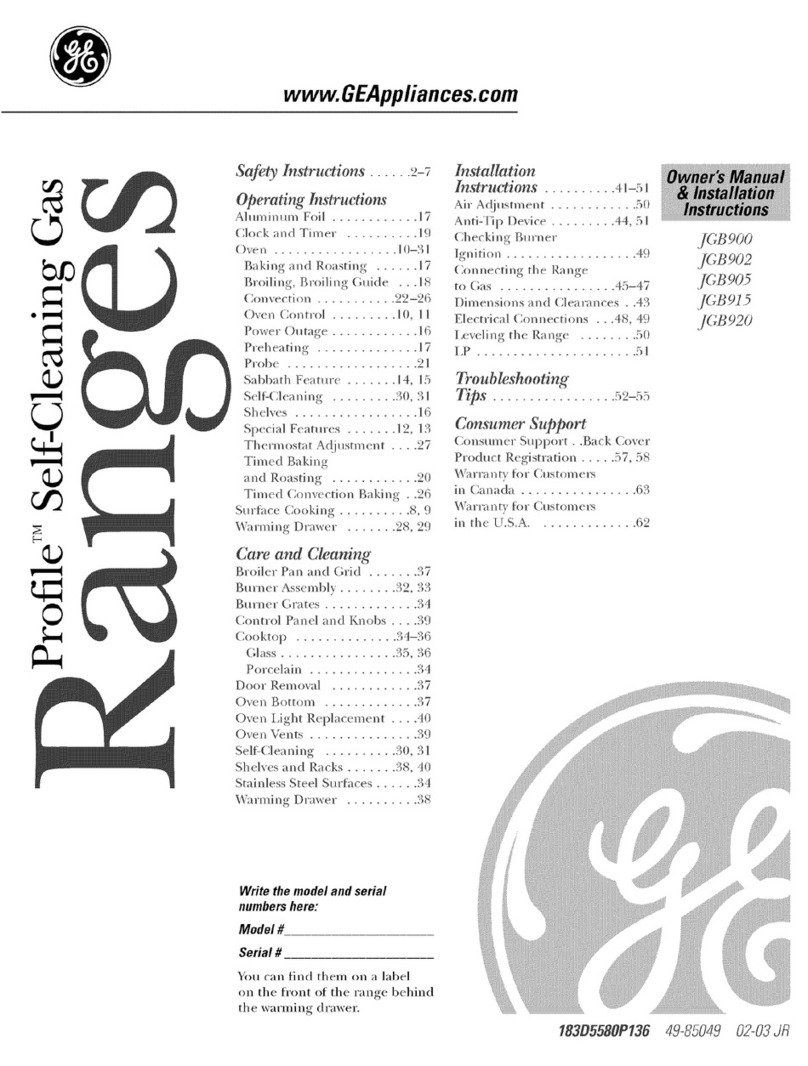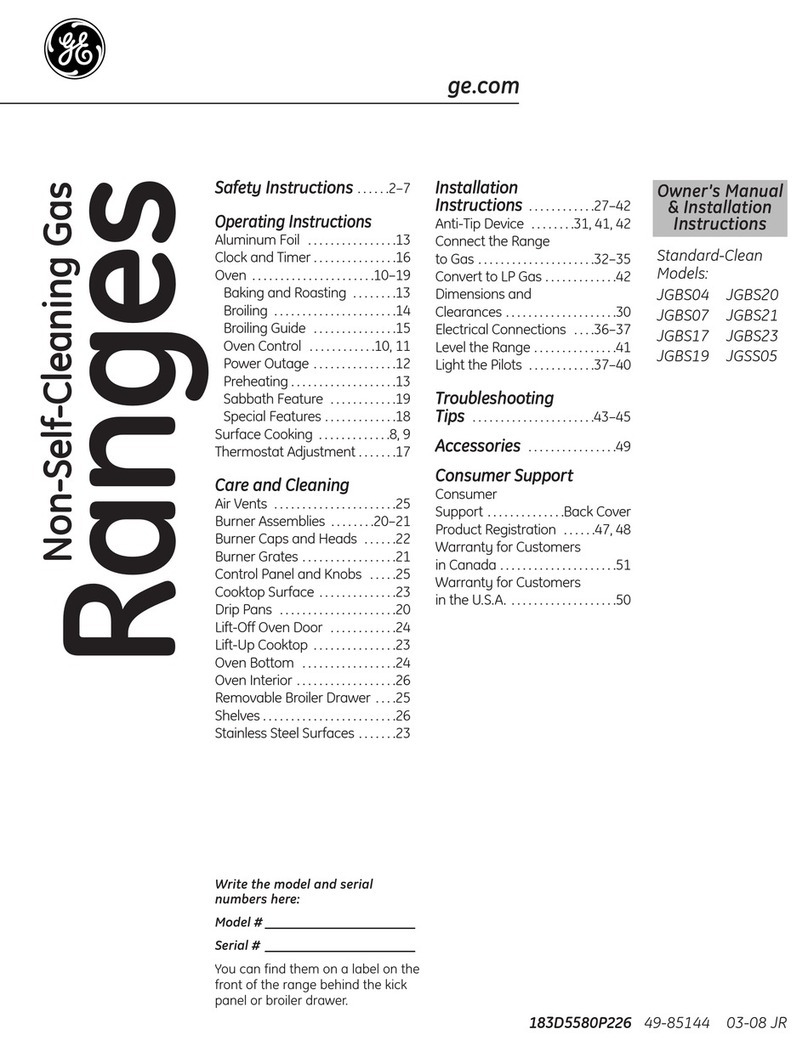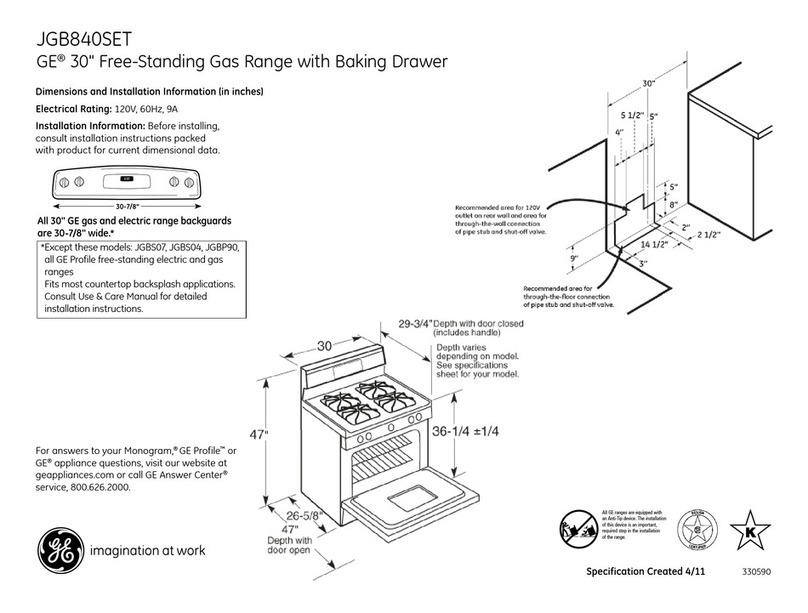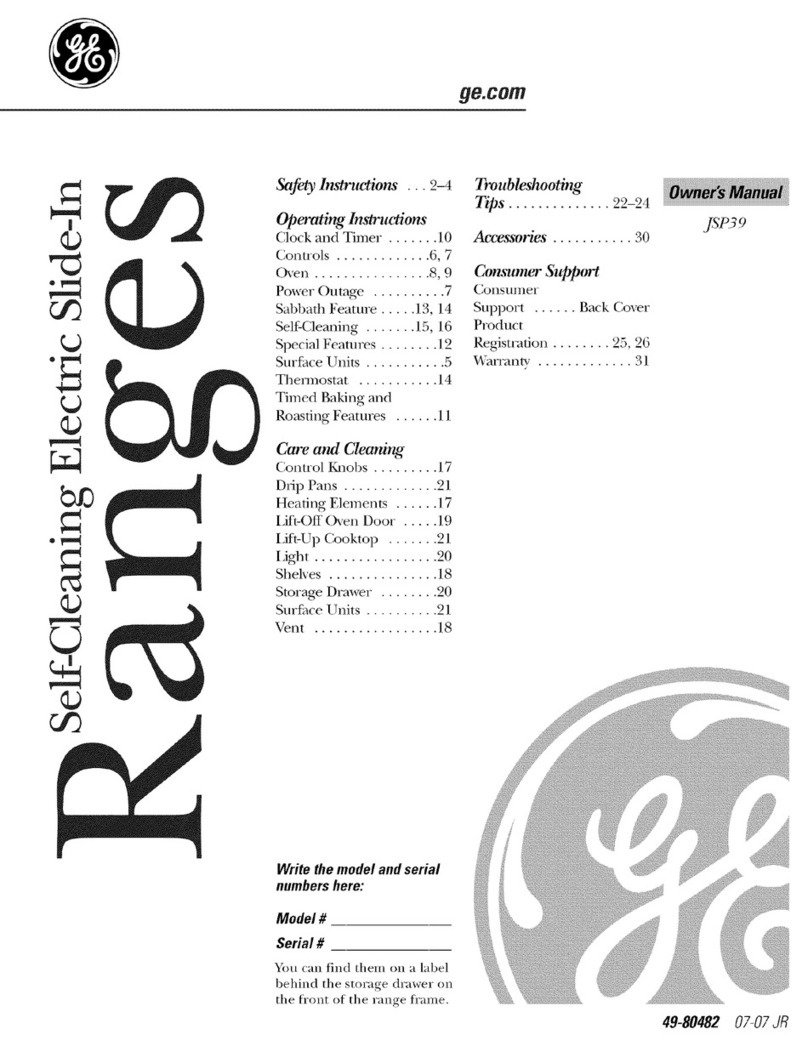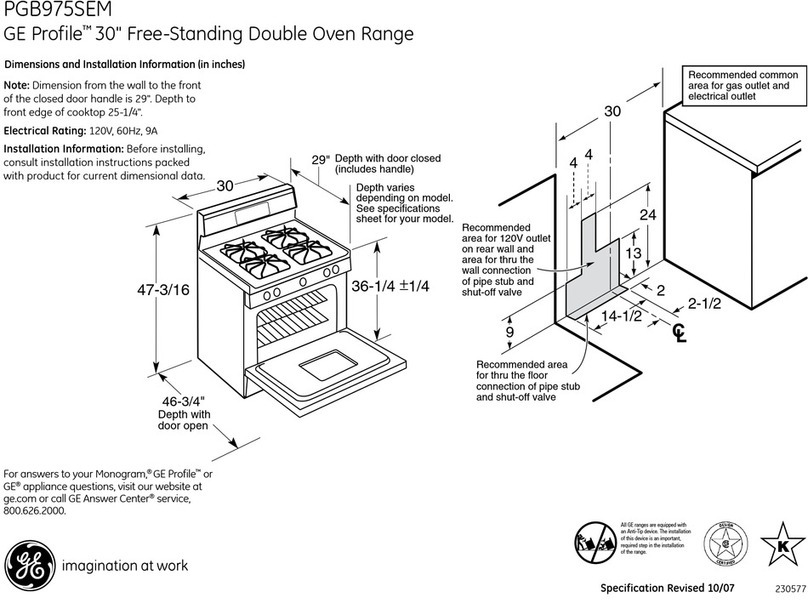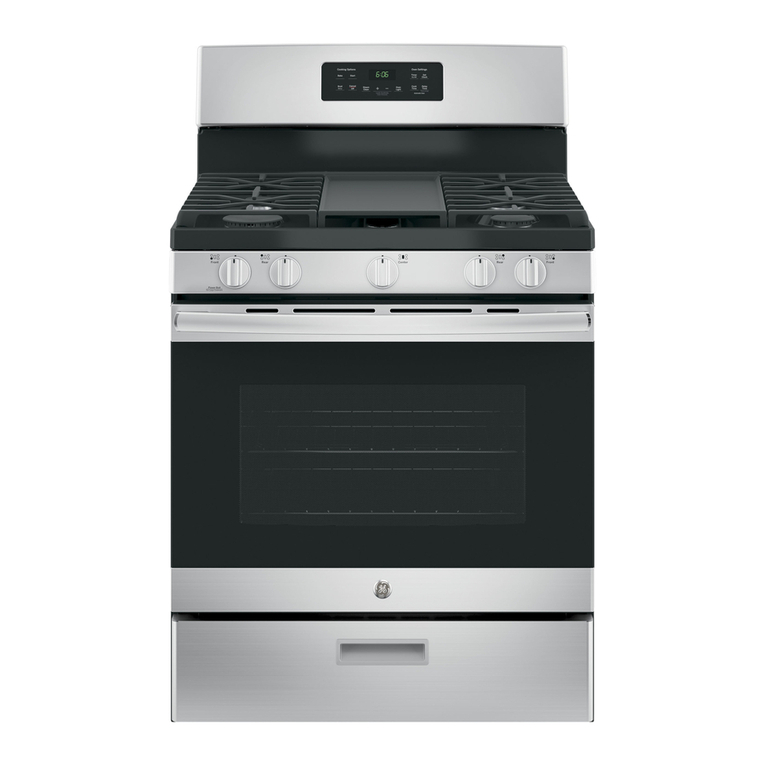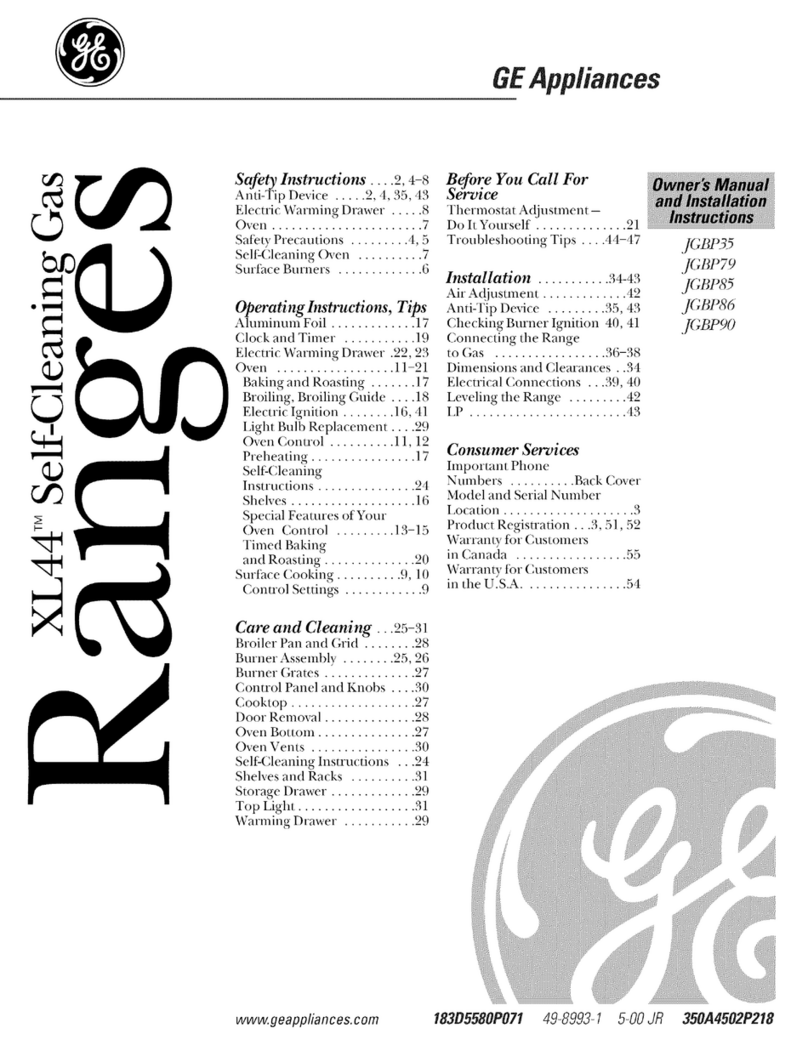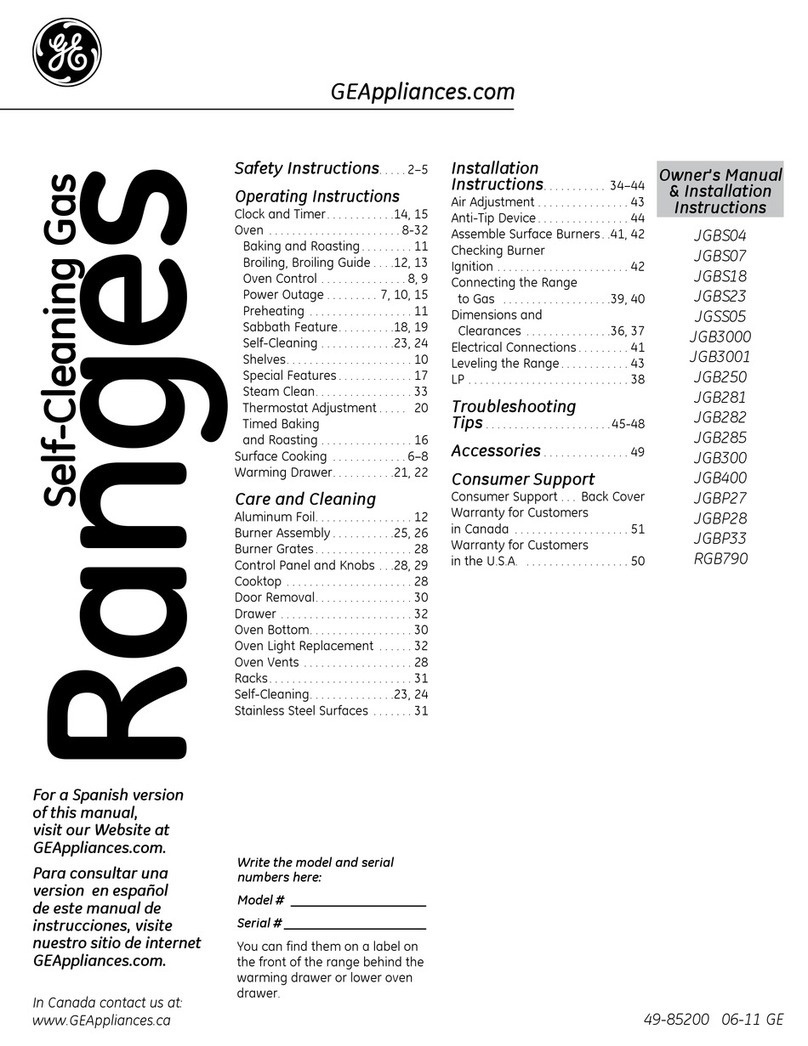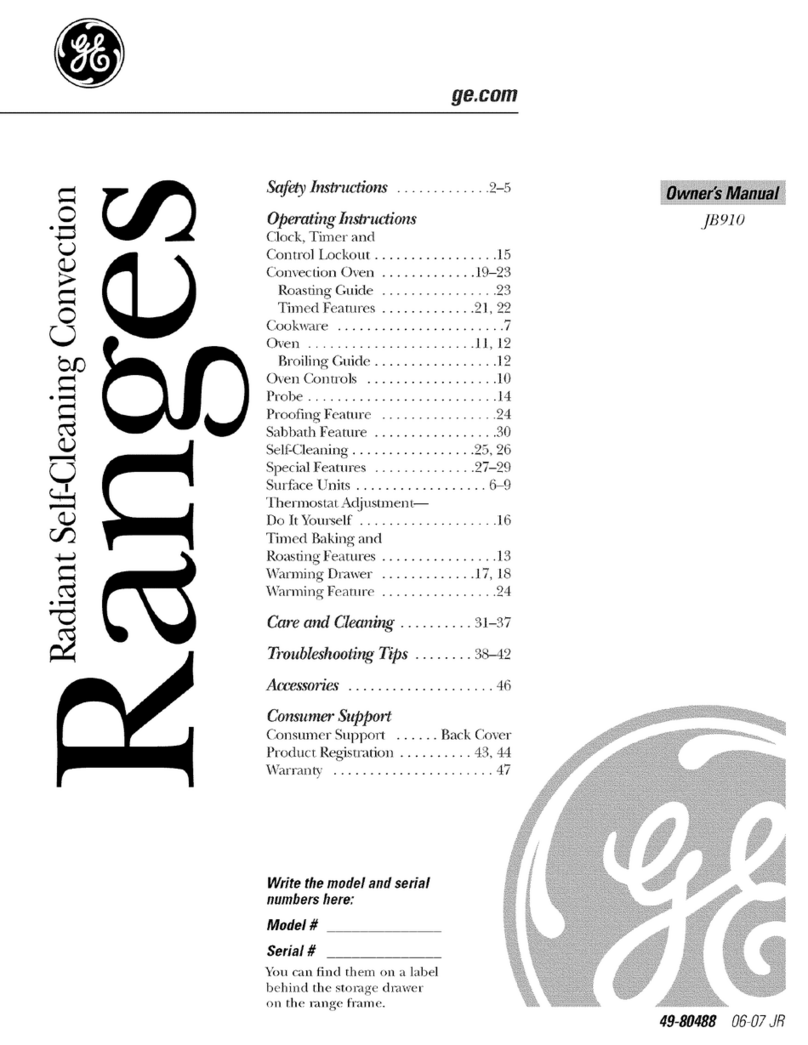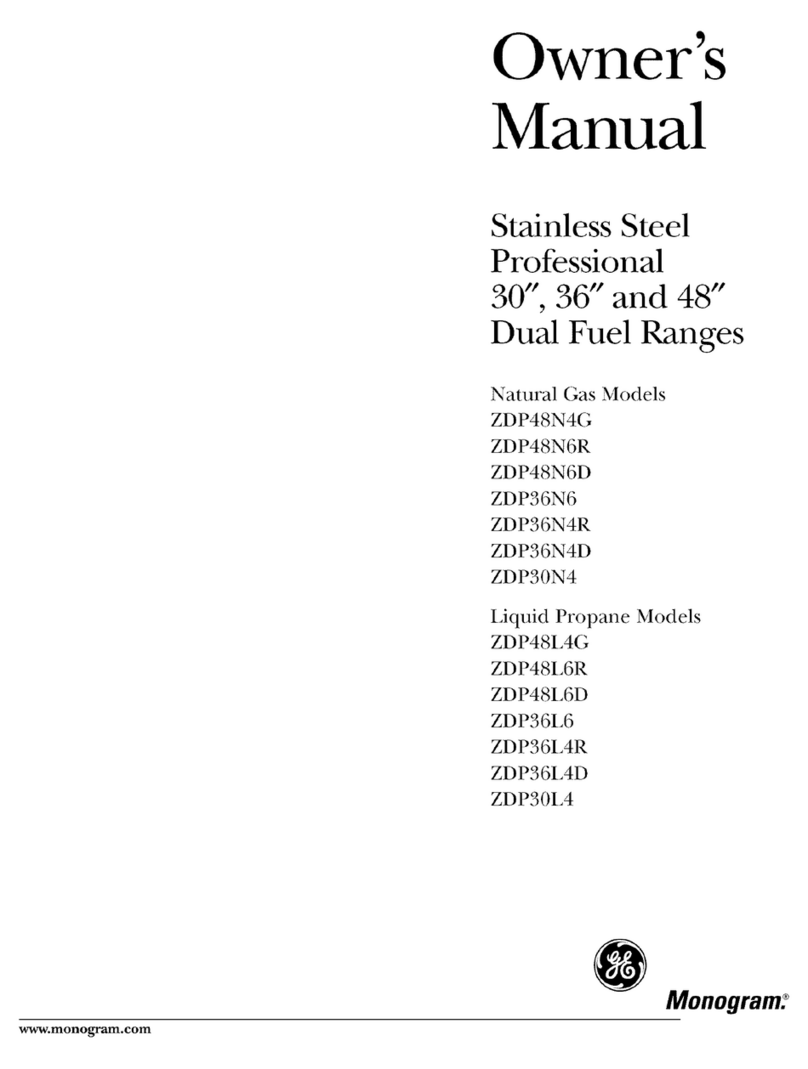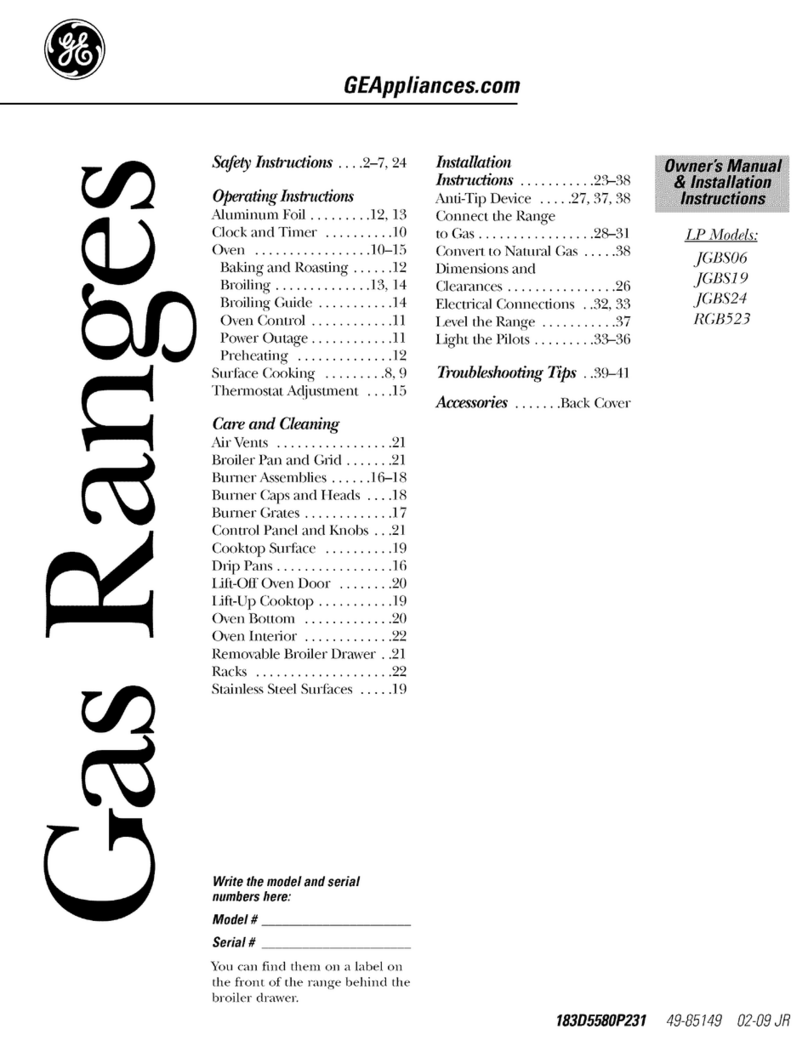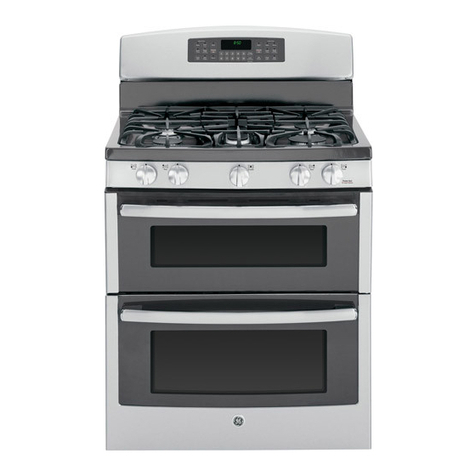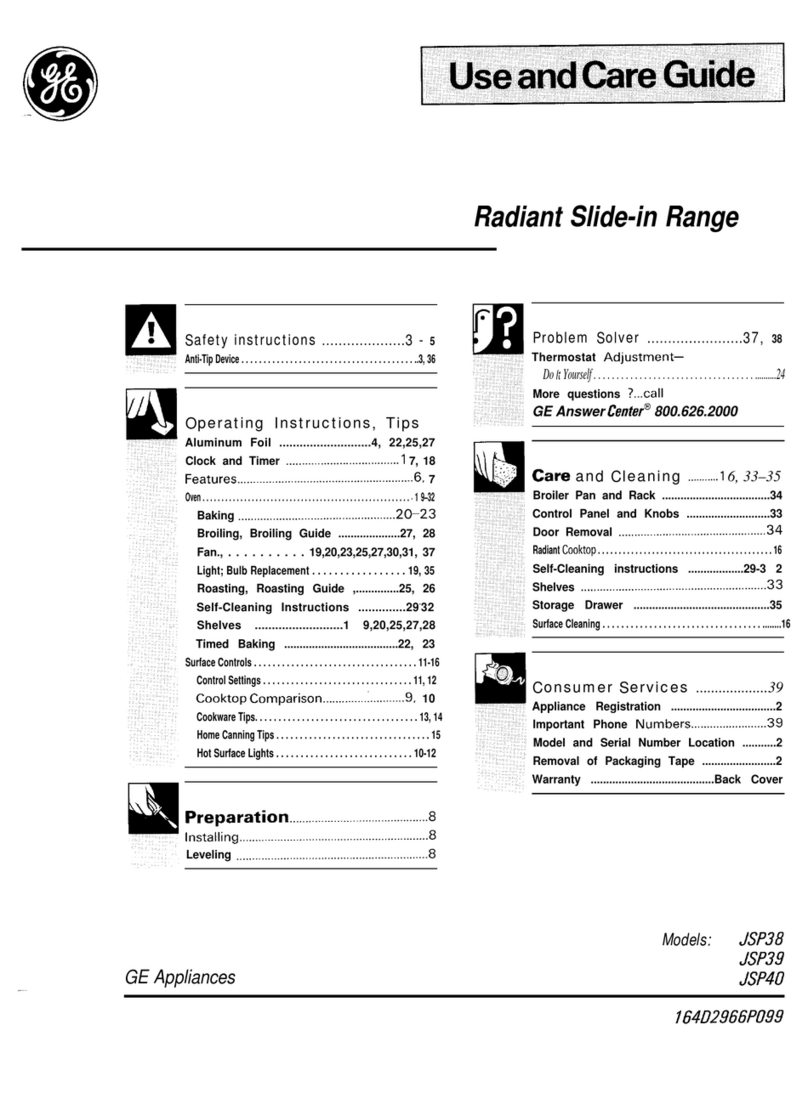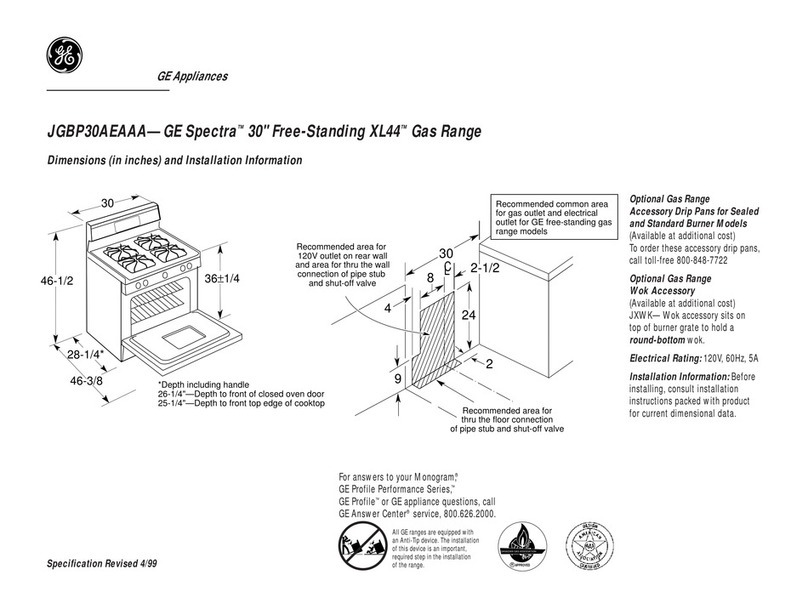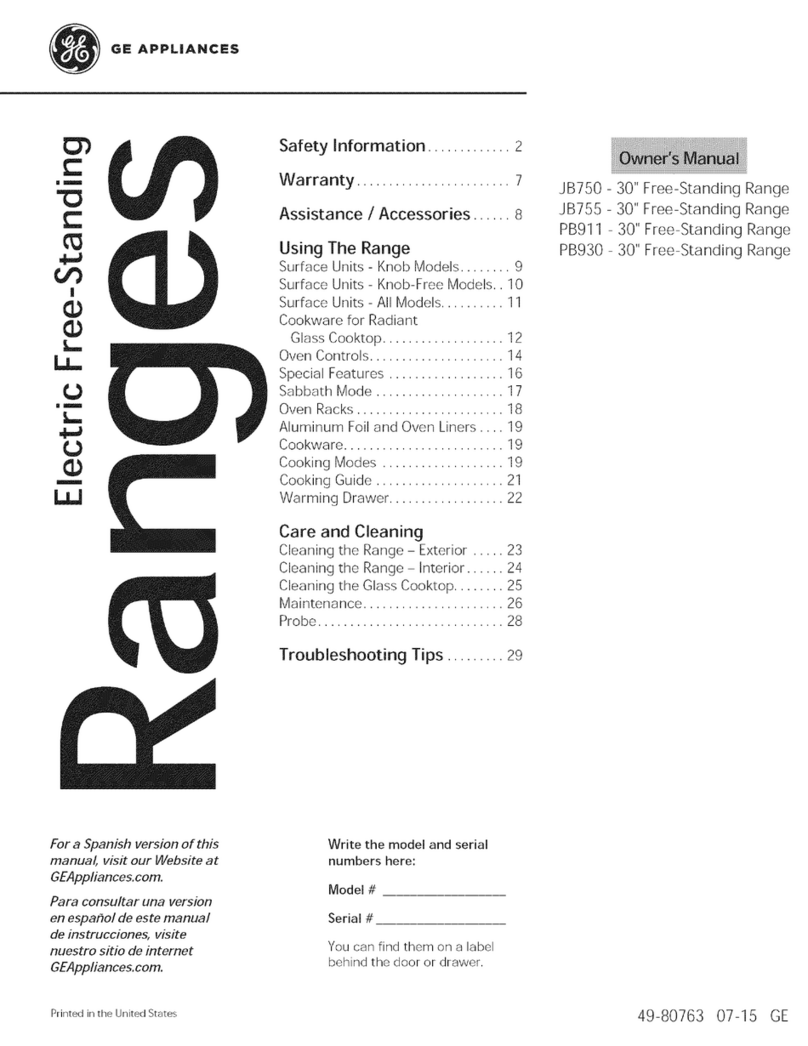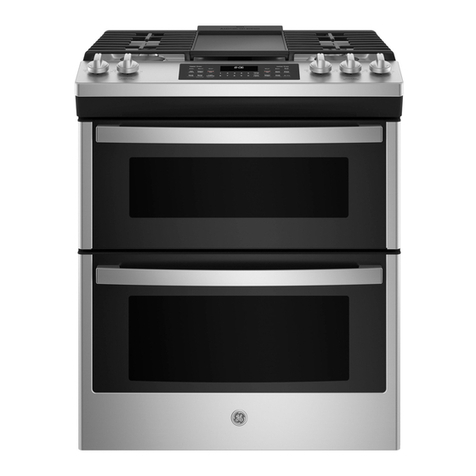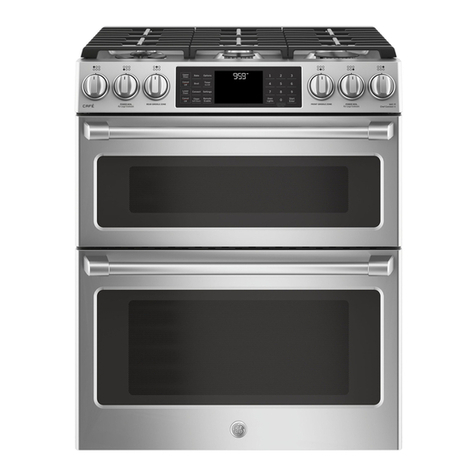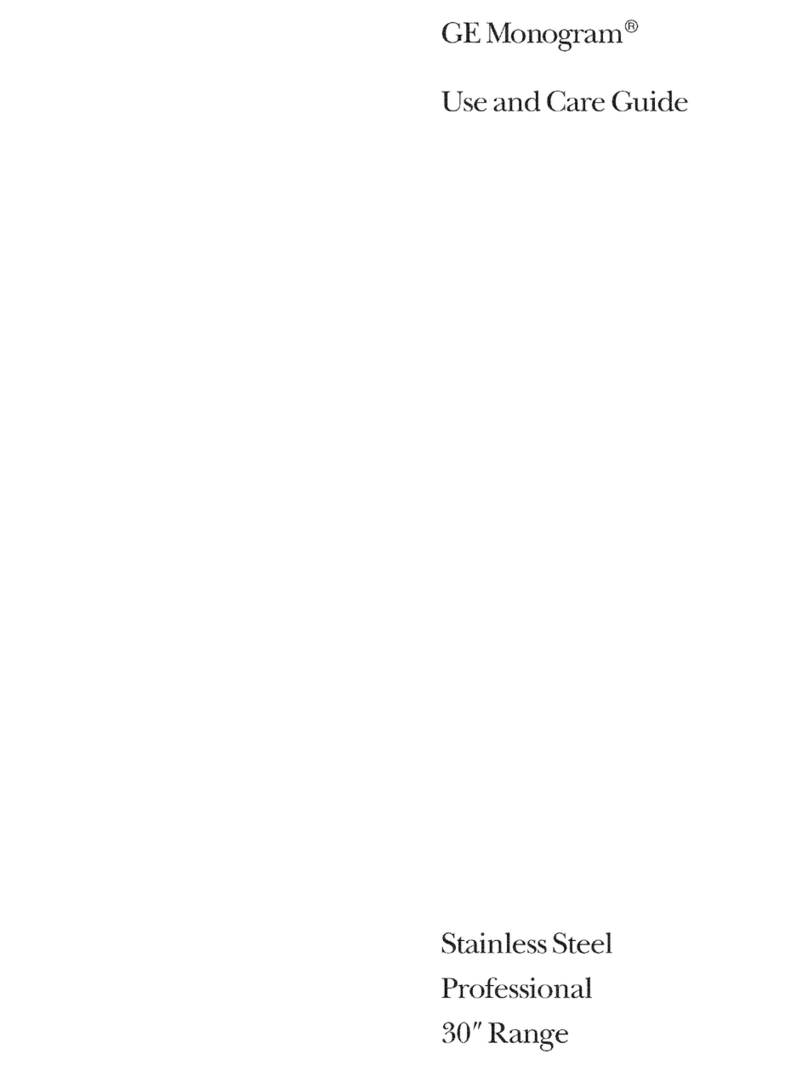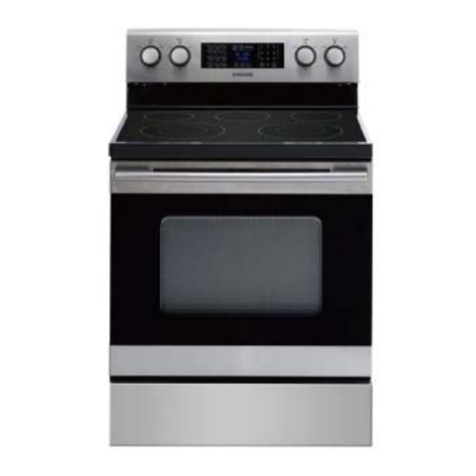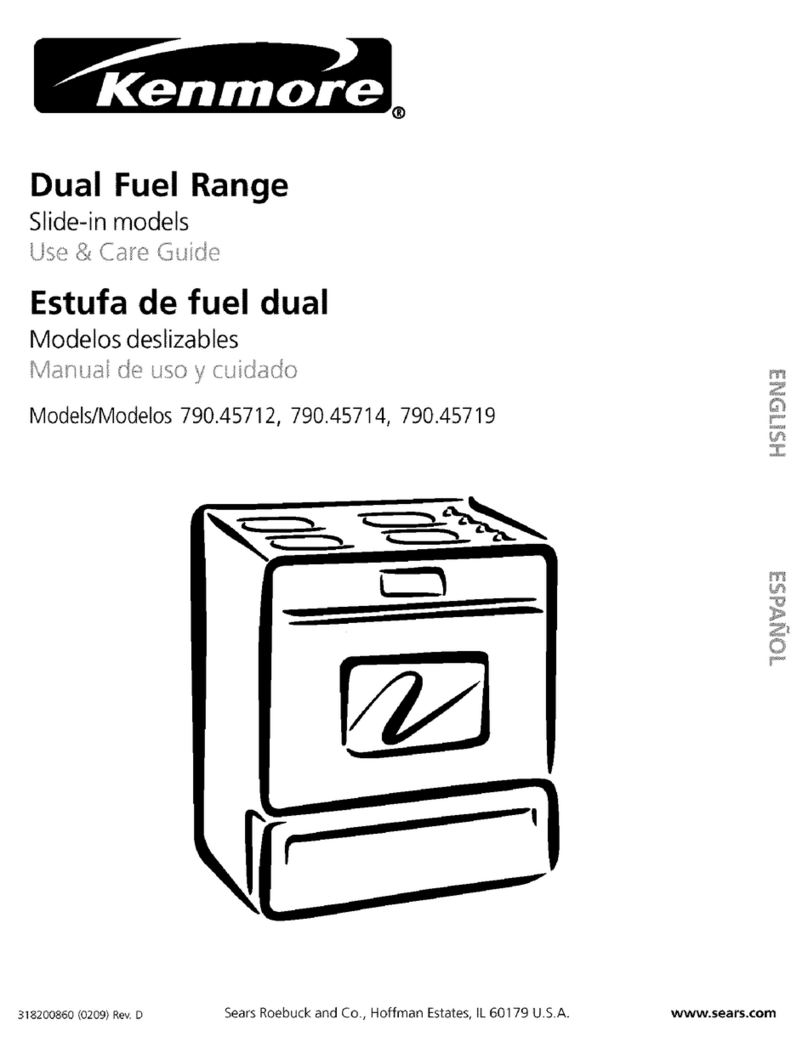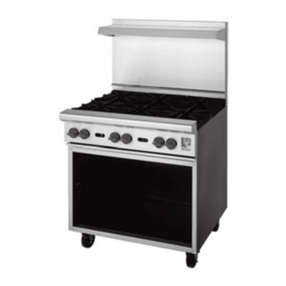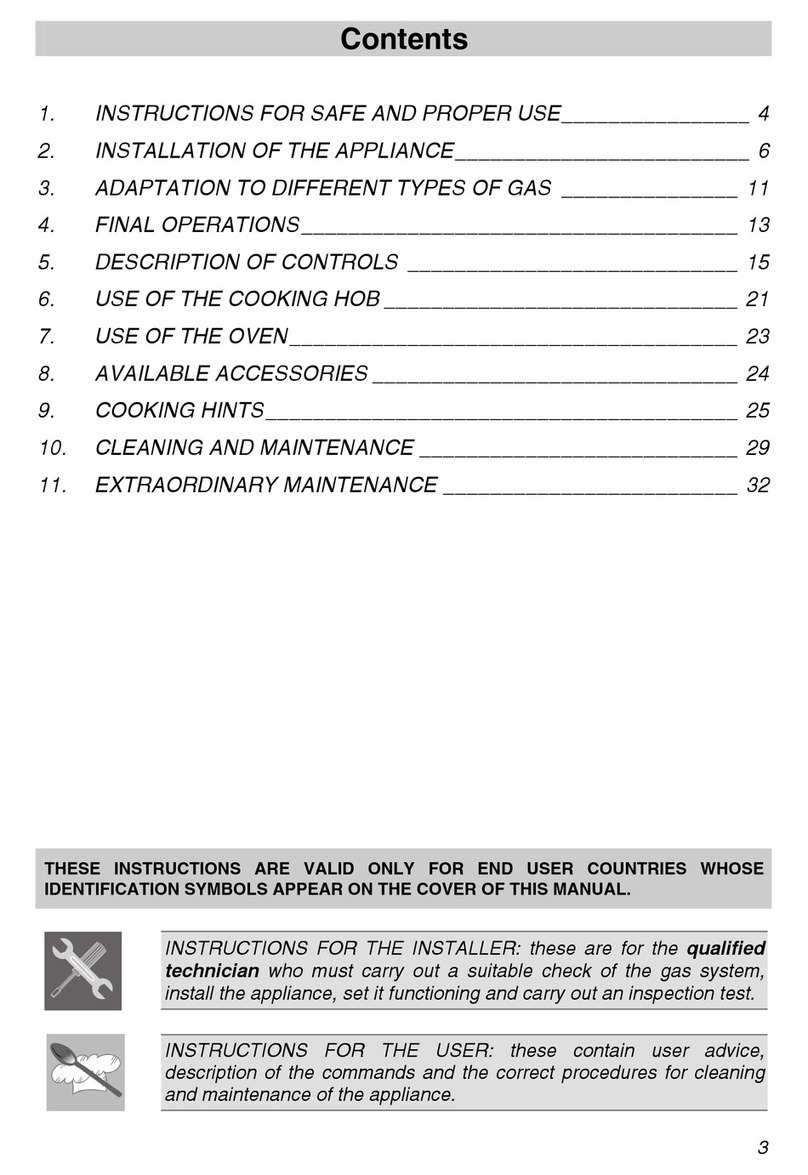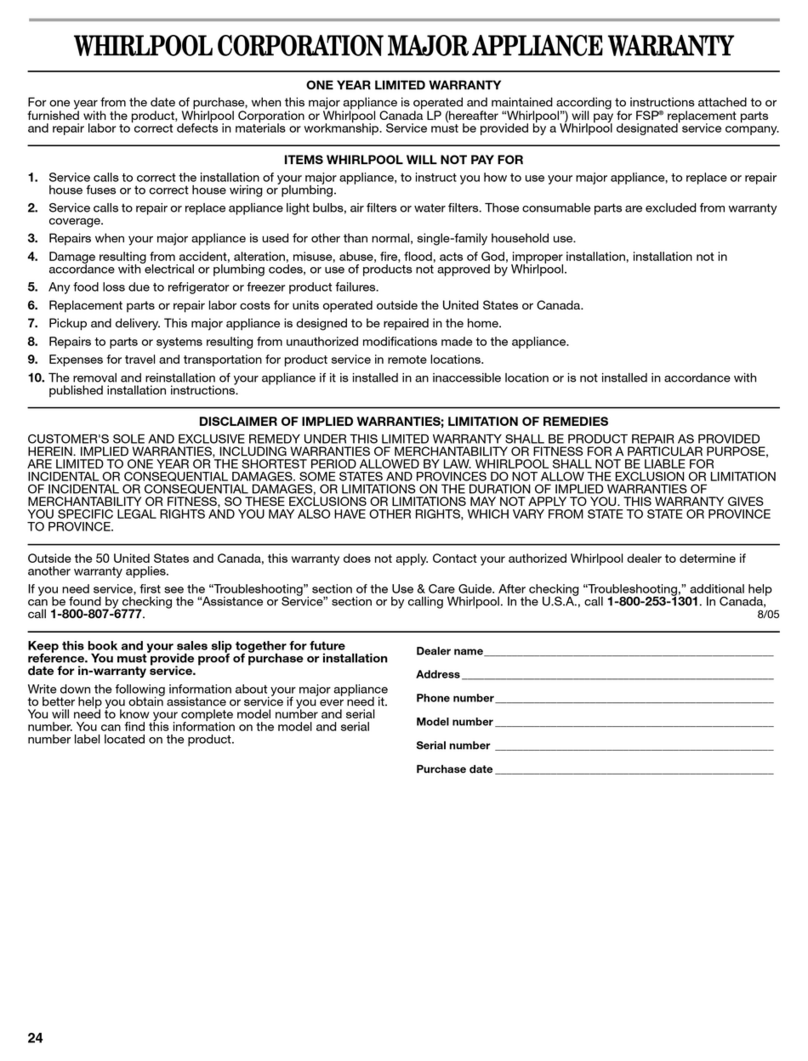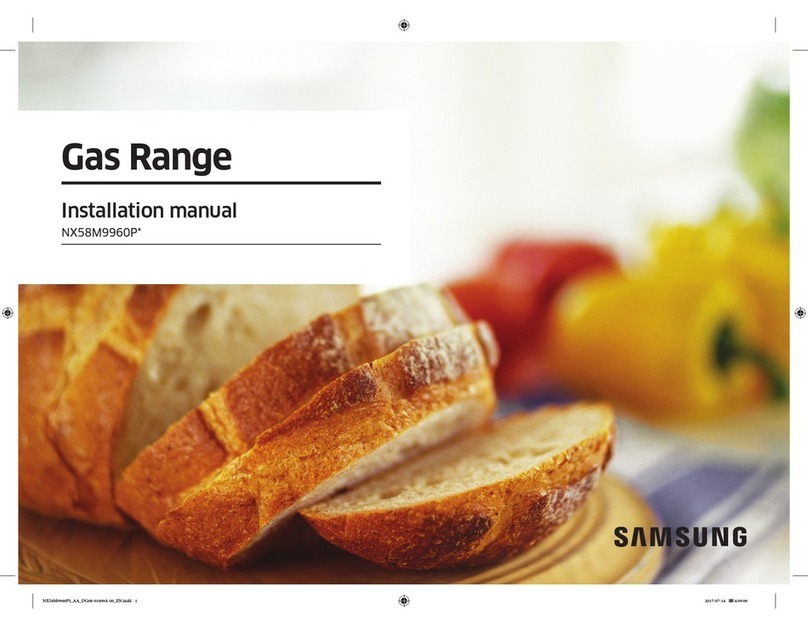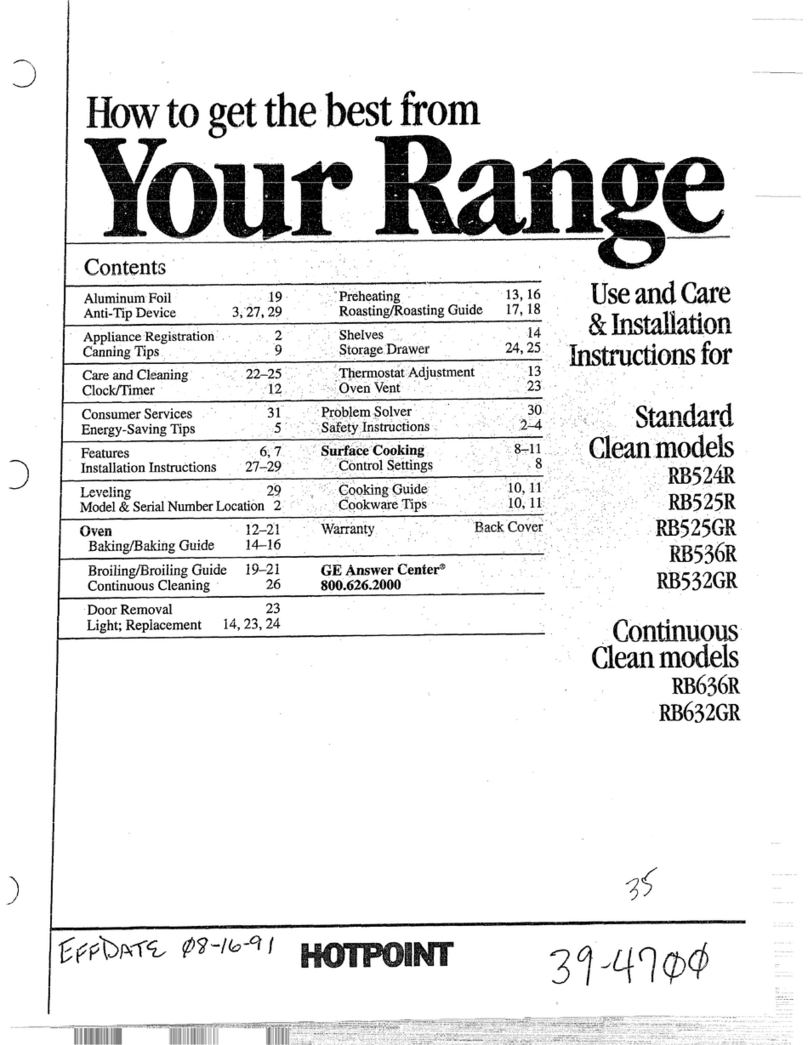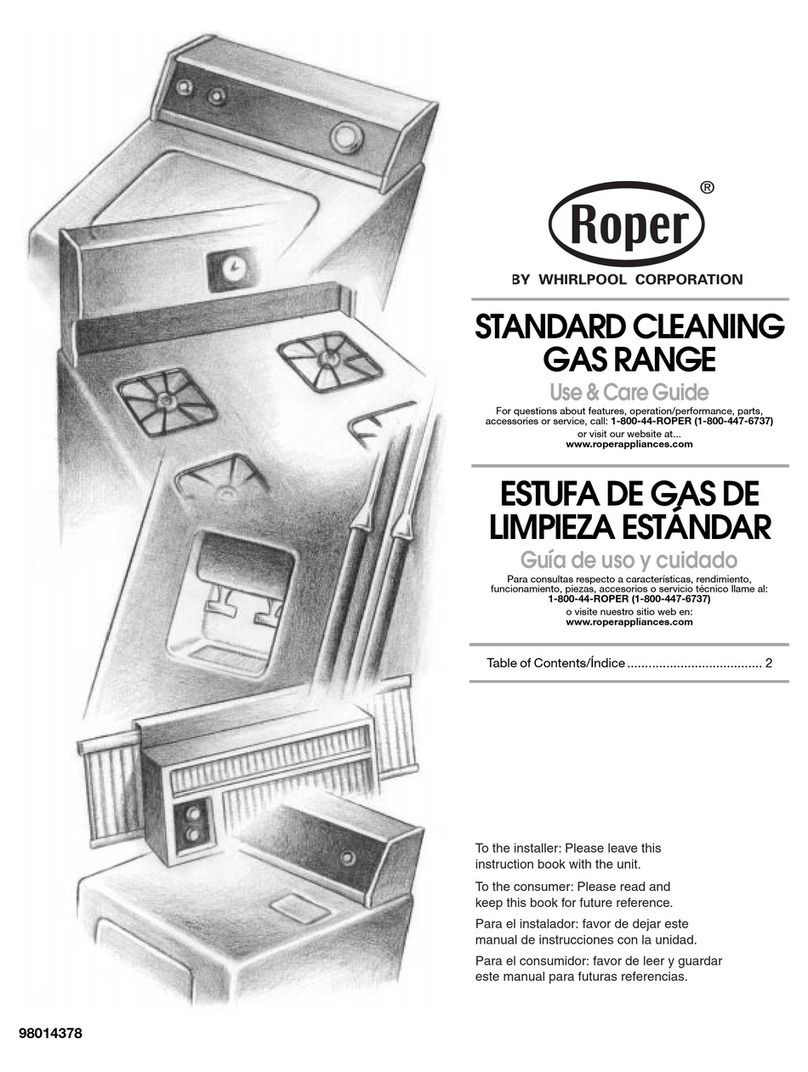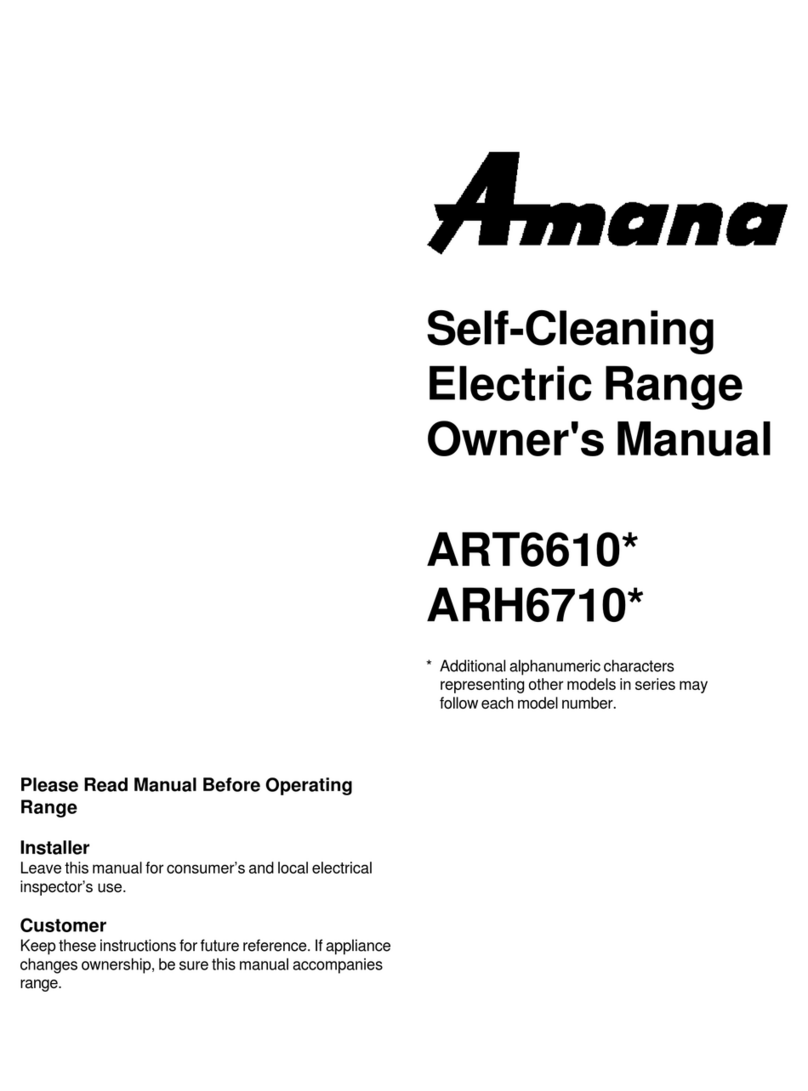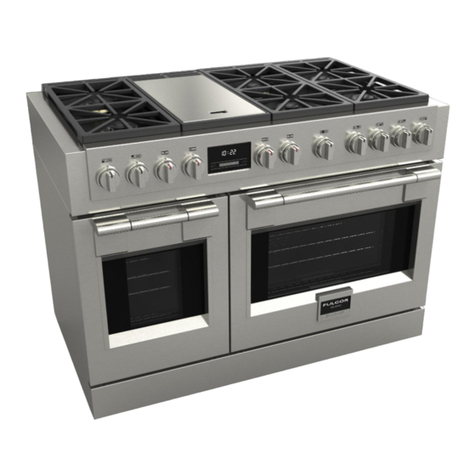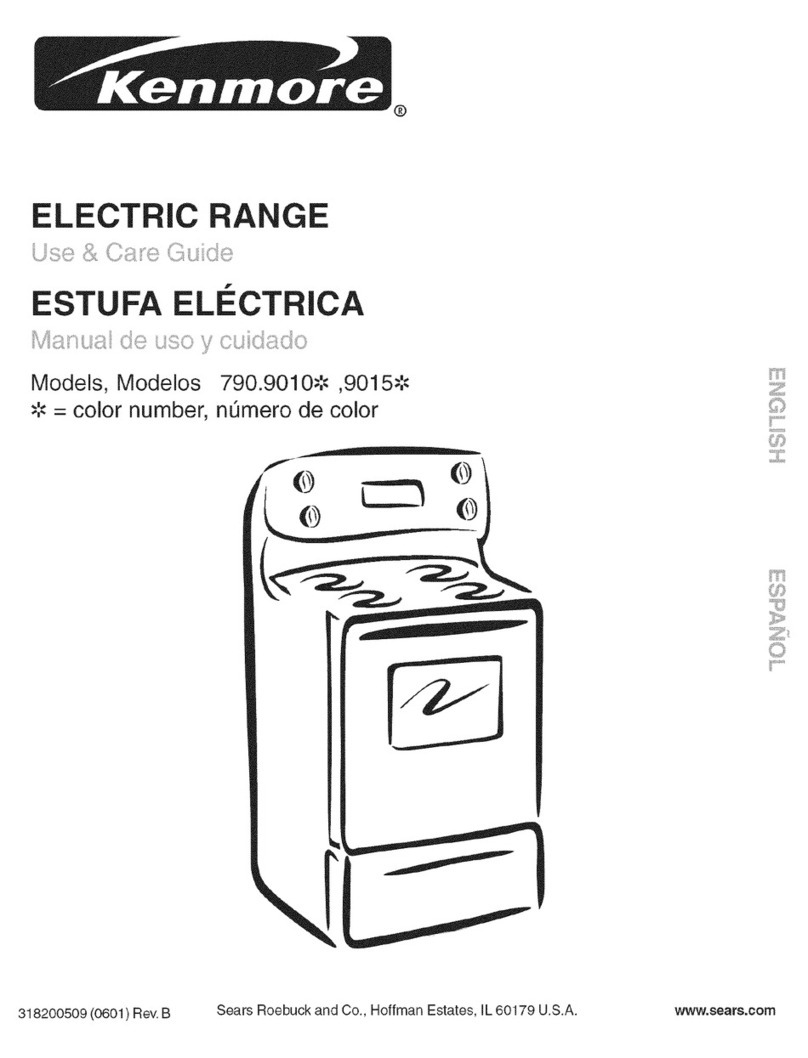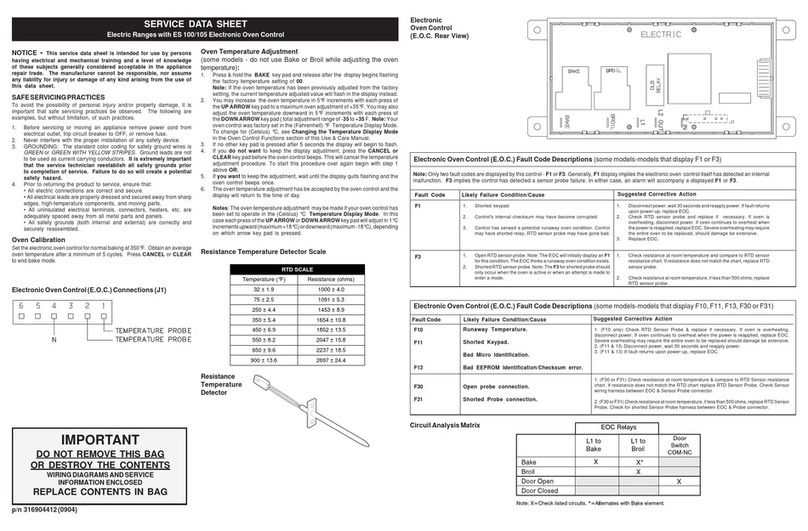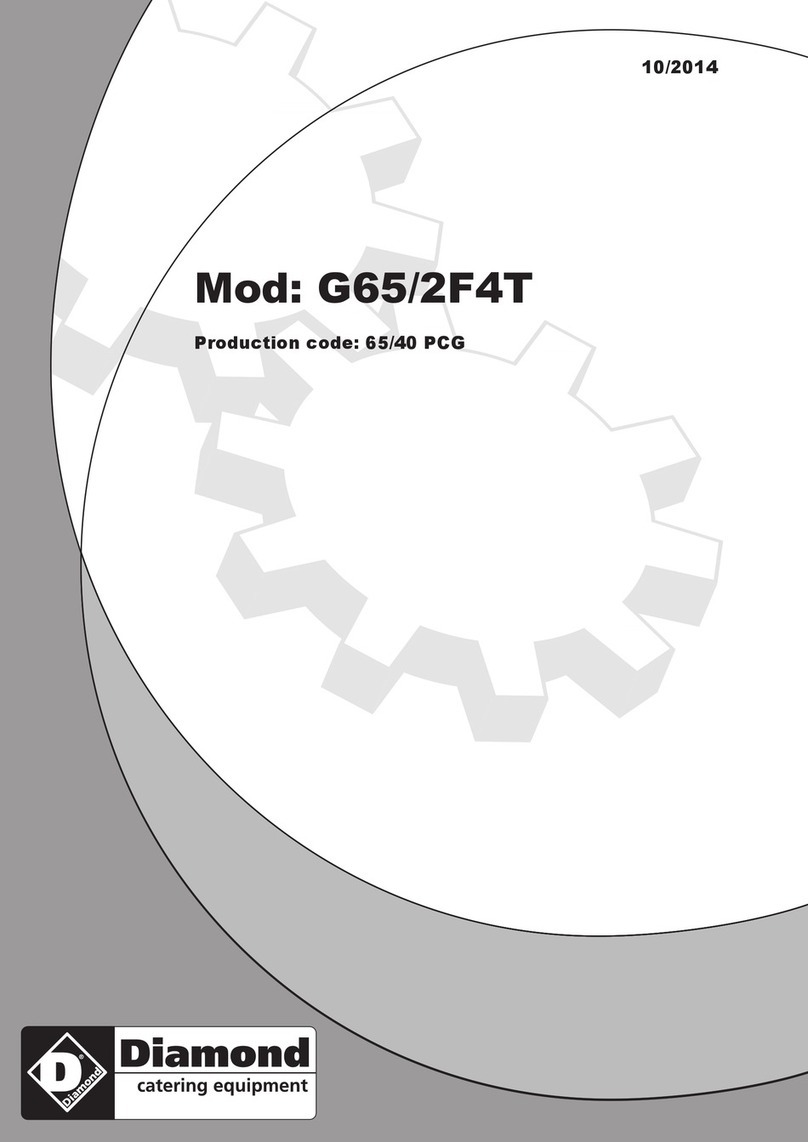
iMPORTANTSAFETYiNFORMATiON.
READALLiNSTRUCTiONSBEFOREUSING.
6
A,!
m
SURFACEBURNERS
Useproperpan size--avoid pans thatare unstableor easilytipped.Selectcookwarehavingfiatbottomslarge
enoughto coverburnergrates.Toavoidspillovers,makesure cookwareis largeenoughto containthefood
properly.Thiswill bothsave cleaningtimeandpreventhazardousaccumulationsoffood,sinceheavyspattering
orspilloversleft onrange canignite.Usepanswith handlesthat can beeasilygraspedandremaincool
Always use the Life posidon when iofidng
the top bm_ners and make sm_e the bm_mrs
have i_fited.
Never leave the surfhce btm_ers unattended
at high flame settings. Boik)vers cause
smoking and _easy spillovers that may
catch on fire.
Adjust the top burner flame size so it does
not extend beyond the edge of the cookware.
Excessive flame is hazardous.
Use only dUpot holders--moist or damp pot
holders on hot surtaces may result in bums
flom steam. Do not let pot holders come
near open flames when liNng cookware. Do
not use a towel or other bulky clod1 in place
of a pot holder
_%en using glass cook, s-are, make sure it
is designed fbr top-of:range cooking.
To minimize the possibility of bums, i_fition
of flammable materials and spillage, turn
cookware handles toward the side or back of
the range without extending over adjacent
burners.
Carefldly watch fbods being flied at a high
flame setting.
Always heat fat slowly, and watch as it heats.
K a combination of oils or fats will be used
in fl_4ng, stir together befbre heating or
as fats melt slowly.
Use a deep fat the_nometer whenever
possible to prevent overheating fat beyond
the smoking point.
Do not operate the btmmr without all btmmr
parts in place.
Use the least possible amount of tat fbr
effective shallow or deep-tht fi_4ng. Filling the
pan too fifll of fat can cause spillovers when
tbod is added.
Do not flame fbods on the cooktop. If you do
flame fbods under the hood, mm the fan on.
Do not use a wok on the cooking surface
if the wok has a round metal ring that is
placed over the burner _ate to support the
wok. This ring acts as a heat trap, which may
damage the burner _ate and burner head.
Also, it may cause the burner to work
improperly. This may cause a carbon
monoxide level above that allowed by cmTent
standards, resulting in a health hazard.
Foods fbr fi}4ng should be as dUas possible.
Frost on flozen fbods or moisture on flesh
fbods can cause hot tat to bubble up and over
the sides of the pan.
Never try to move a pan of hot tat, especially
a deep fat flyer Wait until the fat is cool
; Do not leave plastic items on dm cooktop--
they may melt if left too dose to the vent.
Keep all plastics ms'ayfiom the surface
bm_ ers.
To avoid the possibility of a bum, always be
certain that the controls fbr all burners are
at the OFFposition and all grates are cool
befbre attempting to remove them.
If range is located near a window, do not
hang long curtains that could blow over the
surface burners and create a fire hazard.
If you smell gas, mm off the gas to the range
and call a qualified sen,ice technician. Never
use an ()pen flame to locate a leak.
Always turn the surtace burner controls off
befbre rem(Mng cookware.
Do not leave any items on the cooktop. The
hot air flom the vent may ignite flammable
items and will increase pressure in closed
containers, which may cause them to burst.
g%en disabling range lock-out, make
sure the surface controls are set to the OFF
position. This will preclude gas flow when the
range is mined on.
